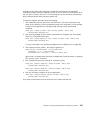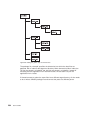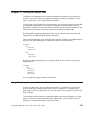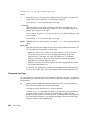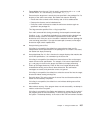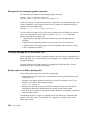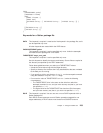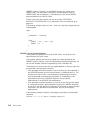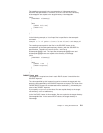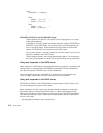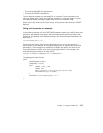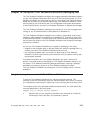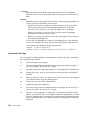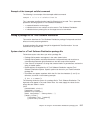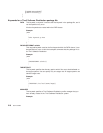The resulting source path is the concatenation of d:\demoapp with the
SOURCE file specifications. Therefore, all of the .exe files in the directory
d:\demoapp\bin are copied to the target directory e:\demoapp\bin.
(DATA
(TARGETROOT e:\demoapp)
.
.
(RULE
(SOURCE bin\*.exe)
(TARGET bin)
)
.
.
)
In the following example, a list of input files is specified on the teamcpak
command:
teamcpak -o "-x -m" gather c:\a.exe c:\b.exe d:\rexx\*.cmd demoga.pkf
The resulting source path for the files in the SOURCE clause is the
concatenation of the teamcpak temporary directory with the SOURCE file
specifications. Therefore, the source for the *.exe files is
d:\teamcpak.@@@\*.exe. The input files d:\teamcpak.@@@\a.exe and
d:\teamcpak.@@@\b.exe are copied to the directory e:\demoapp.
(DATA
(TARGETROOT e:\demoapp)
.
.
(RULE
(SOURCE *.exe )
(TARGET targetroot)
)
.
.
)
TARGET Target_path
This keyword is required one time in each RULE clause. It must follow the
SOURCE keyword.
The value specified by this keyword is used to construct the target path into
which the files specified by the SOURCE keyword are copied. The value of the
TARGETROOT keyword is concatenated with a backslash (\), followed by the
value of the TARGET keyword.
If you specify targetroot as the value, files are copied directly to the target
root directory, not to a subdirectory.
In the first RULE clause of this example, files are copied to the target directory
f:\demoapp\bin\files. In the second RULE clause, the target directory is
f:\demoapp.
Chapter 17. Using the Gather tool 211



